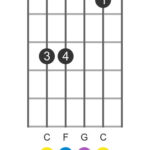My initial foray into the world of guitar effects was marked by the acquisition of a DOD Grunge overdrive and a Dunlop Cry Baby wah pedal. The raw, unapologetic aesthetic of those early DOD pedals appealed to my youthful rebellion, promising a sonic territory as untamed as their names suggested. While the audio fidelity might have left something to be desired, and my fledgling attempts at Hendrix-esque wah acrobatics clashed rather discordantly with the aggressive snarl of maxed-out “grunge,” “butt,” and “face” settings, in retrospect, I like to imagine my younger self as a pioneering noise artist, albeit one confined to the acoustic limitations of my parents’ basement. The reality was likely closer to a somewhat clumsy rendition of Black Sabbath and Green Day anthems, punctuated by the eternally engaged wah pedal. These initial pedals, failing to convince my parents of the fiscal wisdom of continued guitar lessons, were relegated to closet storage, awaiting a future re-evaluation.
Growing up, the concept of guitar pedals, and especially Guitar Effects Boards, held a certain mystique. My first pedals might have materialized from a friend’s generosity, as parental procurement remains a hazy area of my memory. It wasn’t until I gained the autonomy to browse the magazine racks unsupervised during grocery shopping trips that I first glimpsed the actual setups of my guitar idols. The meticulously diagrammed gear layouts showcased in the back pages of Guitar World magazine typically featured elaborate racks laden with digital effects processors, preamps, power amplifiers, and imposing full stacks. The breakthrough moment arrived with a magazine interview featuring J Mascis of Dinosaur Jr. His pedalboard, a seemingly organized collection of stompboxes, offered a revelation. Pedals, unlike their rack-mounted counterparts, possessed an inherent transparency. Their function was often self-evident, communicated through their name or intuitive design. Rack effects, in my early understanding, seemed complex and less immediately graspable. Before this pivotal encounter, I labored under the misconception that rack processors were the sole avenue for sonic experimentation with guitar effects.
This encounter propelled me into an immersive exploration of guitar pedals. My journey encompassed trading with fellow musicians, navigating the buy-and-sell market, and ultimately, constructing pedalboards for both myself and other guitarists. The landscape has shifted dramatically. Pedals are now more ubiquitous than ever, a testament to their creative potential, but this popularity has a corollary. For virtually every effect category, a dizzying array of pedal options exists, accompanied by a seemingly endless stream of online personalities and strategically placed advertisements subtly suggesting that your tonal fulfillment hinges on acquiring their featured product. Yet, the essence of musical expression often resides in resourcefulness. Artists can conjure compelling sounds from rudimentary materials – an old gas can, fishing line, and pieces of wood. This creativity stems not from marketing persuasion, but from an intrinsic drive to express oneself, utilizing any means available. This inherent human impulse is at the heart of artistic creation.
The next time you find yourself immersed in nature’s beauty, yet your thoughts are monopolized by the next pedal on your wish list, pause and re-evaluate your priorities. Frequently, our desires for new gear are rooted in a perceived need to improve our playing or refine our sound. However, the foundation of musical creation lies in possessing reliable tools that serve the artistic purpose. Is it truly necessary to deplete your savings on a Klon Centaur simply because its Instagram presence has permeated your subconscious? Will acquiring a Blooper or a Microcosm unlock dormant creative potential, or will the manual remain largely unread, leaving your looping and blooping aspirations unfulfilled?
Learning is a deeply personal process. Some musicians thrive on independent exploration, valuing the lessons gleaned from experimentation and self-discovery. Others prefer to bypass the potentially frustrating learning curve and embrace established tools and techniques within their comfort zone. This guide aims to provide a starting point for those embarking on the journey of assembling their sonic toolkit, specifically in the form of the increasingly indispensable guitar effects board. Moving beyond the mystique and hype, let’s focus on building a practical and inspiring foundation for your sound.

